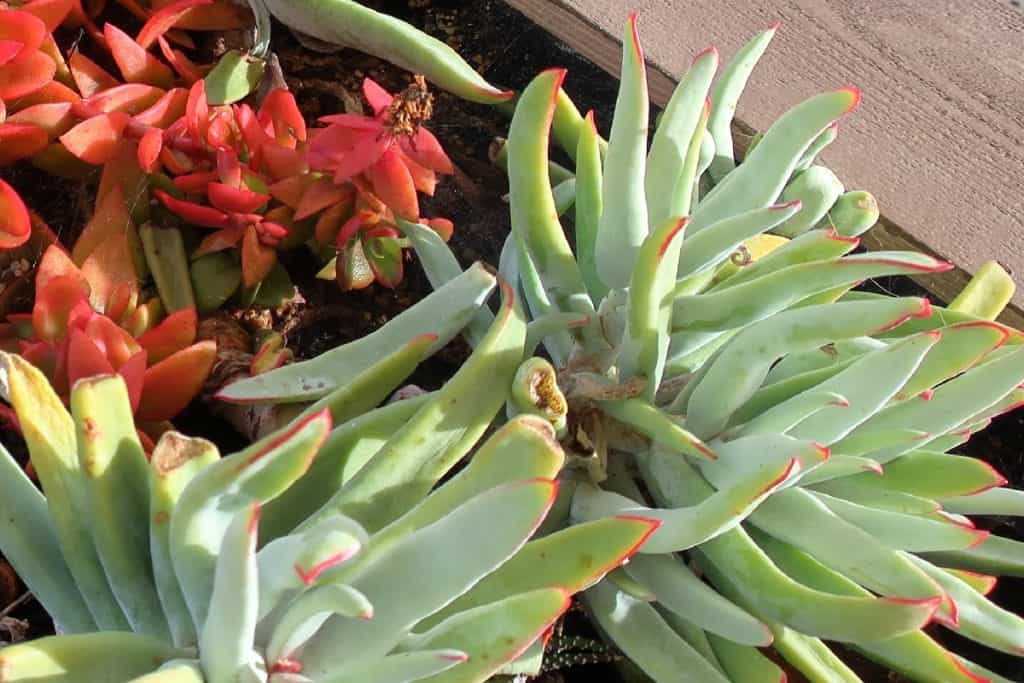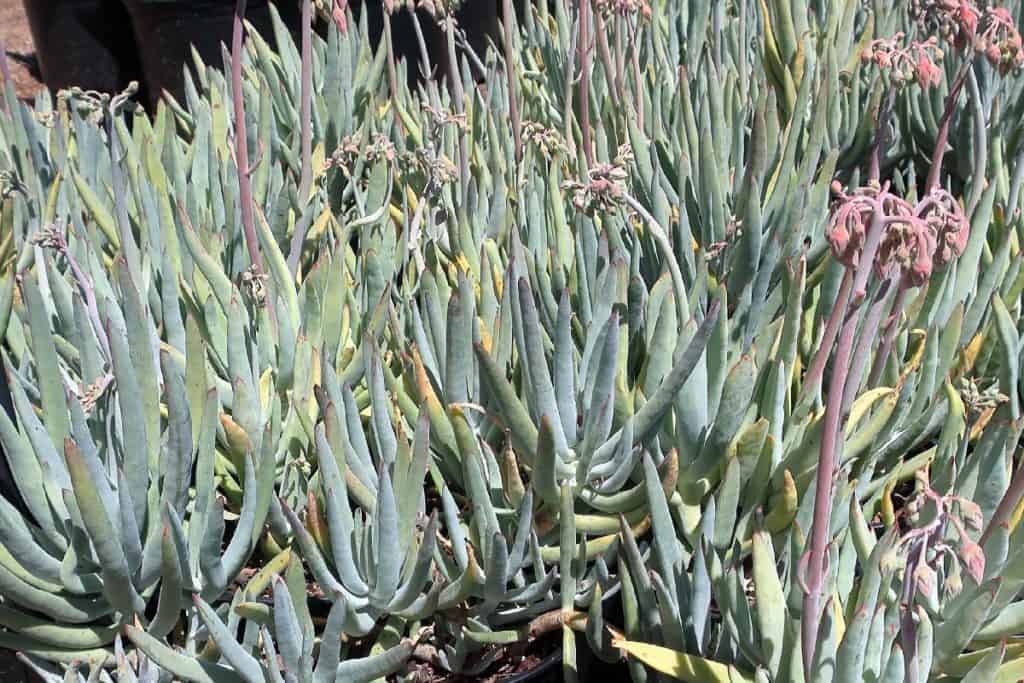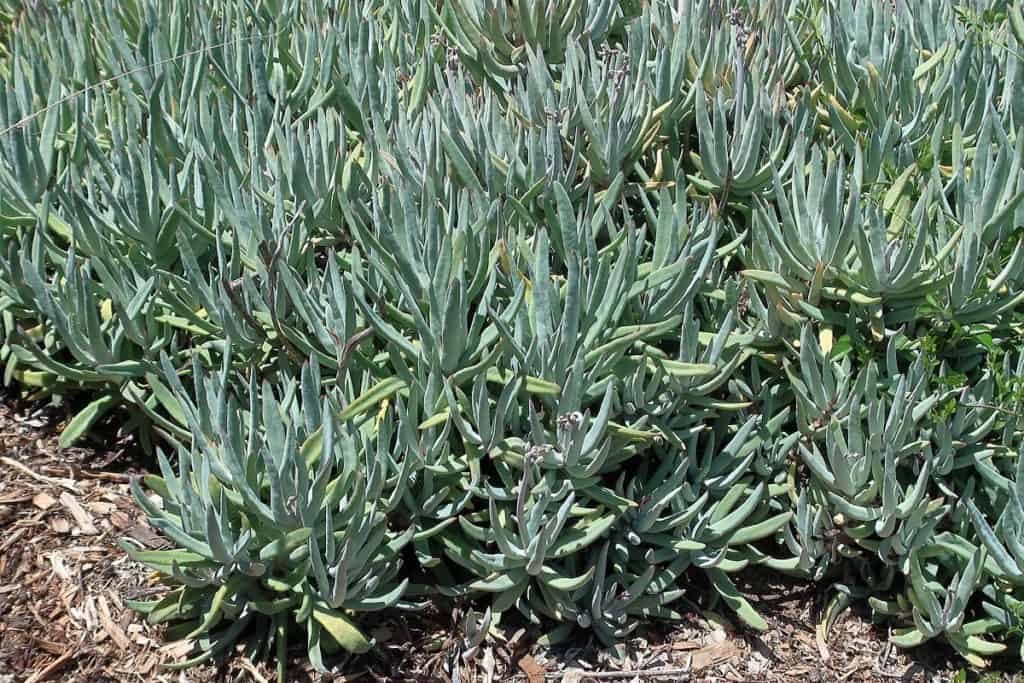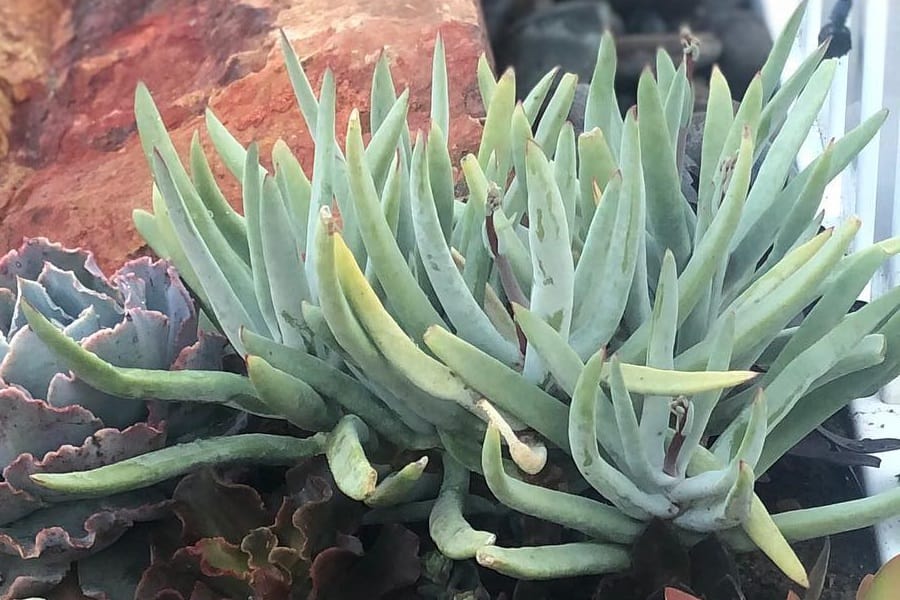Cotyledon Long Fingers: Characteristics and Care
Those quirky finger-like leaves have you hooked, huh? Cotyledon Long Fingers (or as plant nerds call it Cotyledon orbiculata ‘Long Fingers’) is one quirky and cool succulent. With proper care, those wacky appendages can thrive for years. This guide has all the tips to keep your plant happy and healthy!

Contents
About Cotyledon Long Fingers
This funky plant is native to parts of South Africa but is cultivated all over for its unique charm. The tubular leaves really do look like green fingers poking out of the soil. And the best part? Clusters of little bell-shaped orange flowers bloom right on separate stems. It’s like the plant is constantly giving you a thumbs up!
Now let’s dive into how to keep those fingers in tip-top shape:
Related Post:
25 Types Of Cotyledon Succulents (With Pictures)
Cotyledon Long Fingers Care Guide
Light Needs
Like most succulents, Cotyledon Long Fingers craves lots of sunshine. If growing outdoors, aim for 6-8 hours of direct light. Indoors, set it in a bright, sunny window.
No sun? No problem! A grow light can substitute nicely. Position the light about 6-12 inches from the plant and keep it on for 12-14 hours per day.
Just avoid blasting it with intense afternoon rays which can scorch those delicate finger leaves.

Water Wise
This succulent likes its water like its sun – in moderation. The number one killer is overwatering and rot.
Allow the soil to fully dry out between waterings, about every 1-2 weeks in summer. When the finger leaves start looking wrinkly and deflated, that’s your cue to deeply soak the soil.
Never leave the plant sitting in water though. Those roots need a drink, not a swim!

Soil Breakdown
Your Long Fingers doesn’t need fancy soil, just a well-draining brew. A cactus or succulent potting mix works perfectly. Or make your own by combining:
- 2 parts potting soil
- 1 part coarse sand
- 1 part perlite or pumice
That gritty texture ensures excess moisture can easily escape those roots.
Temperature Tips
This sun-lover prefers warm and toasty conditions around 70-90°F. Anything below 45°F for too long can spell trouble.
If nighttime temps dip below freezing, protect your plant by covering it with a sheet or bringing it indoors. Frosty temps below 20°F will sadly kill it.
Fertilizer Fuel
While not absolutely necessary, an occasional feeding can give your Long Fingers an extra boost during its growing season. Around once a month, apply a balanced liquid fertilizer diluted to half strength. Succulents are light eaters, so go easy on the plant food.
Potting and Repotting
Your Long Fingers likes to be a little rootbound, but not too cramped. Use a container with drainage holes and just an inch or two wider than the rosette.
No need to repot frequently – this slow-grower only needs a grooming and soil refreshment every 2 years or so. Early spring is the ideal time to give it some new digs if the pot is overstuffed with roots.
Gently brush away old soil and prune any rotten or dead roots and leaves. Then replant in a fresh well-draining cactus/succulent soil. Voila – your plant will be energized for another period of growth!

Cotyledon Long Fingers Propagation Guide
One of the coolest tricks with Cotyledon Long Fingers is how easy it is to make new baby plants. All you need is one of those cute leaves.
Here’s how:
- Gently twist off a plump leaf from the center rosette
- Allow it to callus over for 1-2 days
- Dip the end in a rooting hormone (optional but helpful)
- Stick the leaf vertically into a well-draining soil mix
- In a few weeks, roots and a new plant will sprout!
With a little TLC, you’ll have plenty of finger props to share with all your plant pals.
So what are you waiting for? Apply these tips and enjoy many years of funky, long-fingered bliss!
